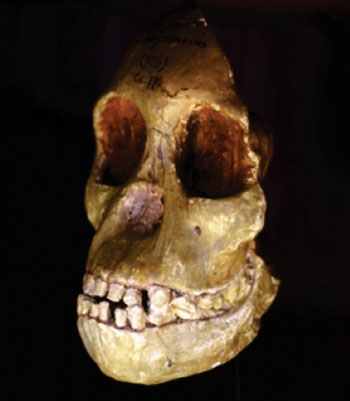CT Scan Casts Doubt on Hominid Child’s Brain Development Is Similar to That of Modern Humans
By LabMedica International staff writers
Posted on 02 Sep 2014
By undergoing advanced computed tomography (CT) scanning, the skull of the famous fossil child is providing evidence for researchers against the human evolutionary hypotheses that the hominid Australopithecus africanus shows the same cranial adaptations found in modern human infants and toddlers.Posted on 02 Sep 2014
The Taung Child, South Africa’s most important hominid fossil remains discovered 90 years ago by Wits University Prof. Raymond Dart, is providing major insights into human origins. By subjecting the skull of the first australopith discovered to the latest technologies in the University of the Witwatersrand Microfocus X-ray Computed Tomography (Johannesburg, South Africa) facility, researchers are refuting current backing for the hypothesis that this early hominid exhibits infant brain development in the prefrontal region similar to that of modern humans.
The findings have been published online on August 25, 2014, in the Proceedings of the National Academy of Sciences of the United States of America (PNAS). The Taung Child has historic and scientific significance in the fossil record as the first and best instance of early hominid brain evolution, and theories have been presented that it offers key cranial adaptations seen in modern human infants and toddlers.
To assess the precise age of this evolutionary adaptation, Dr. Kristian J. Carlson, senior researcher from the Evolutionary Studies Institute at the University of the Witwatersrand, and colleagues, Prof. Ralph L. Holloway from Columbia University (New York, NY, USA) and Douglas C. Broadfield from Florida Atlantic University (Boca Raton, USA), performed an in silico dissection of the Taung fossil using high-resolution CT imaging.
“A recent study has described the roughly three million-year-old fossil, thought to have belonged to a three- to four-year-old, as having a persistent metopic suture and open anterior fontanelle, two features that facilitate post-natal brain growth in human infants when their disappearance is delayed,” said Dr. Carlson.
Comparisons with the existing hominid fossil record and chimpanzee variation do not support this evolutionary scenario. Mentioning flaws in how the Taung fossil material has been recently assessed, the researchers suggest physical evidence does not incontrovertibly link characteristics of the Taung skull, or its endocast, to early prefrontal lobe expansion, a brain region associated with many human behaviors.
The scientists also argued against the earlier proposed theoretical foundation for this adaptation in A. africanus. By refuting the presence of these features in the Taung Child, the researchers dispute whether these structures were selectively beneficial in hominid evolution, especially in australopith hominids.
Therefore, study’s findings revealed that there is still no evidence for this sort of skull adaptation that evolved before modern man, neither is there evidence for a link between such skull characteristics and the suggested accompanying early prefrontal lobe expansion, according to Dr. Carlson.
Related Links:
University of the Witwatersrand Microfocus X-ray Computed Tomography Facility
Columbia University
Florida Atlantic University















